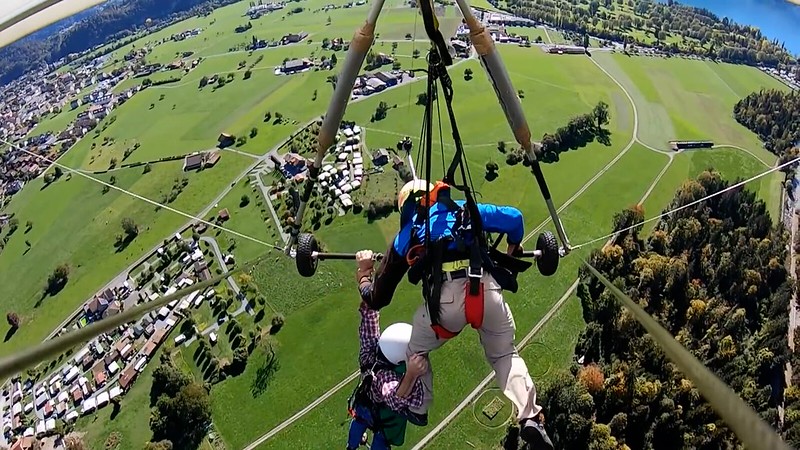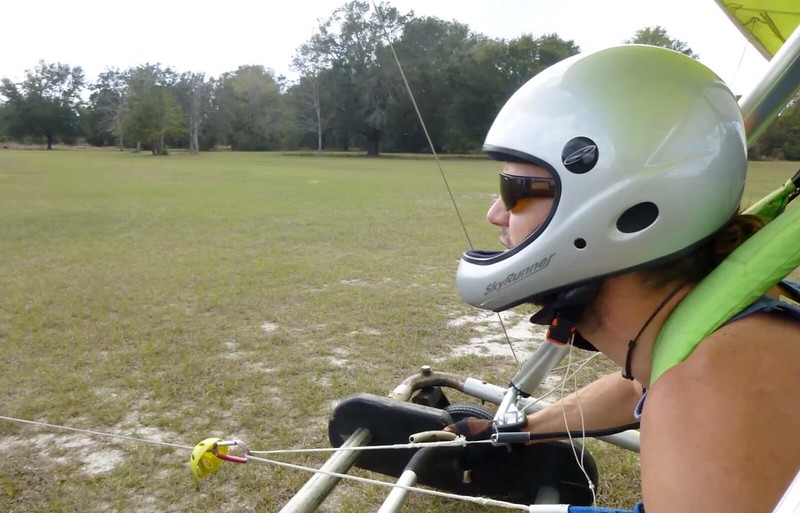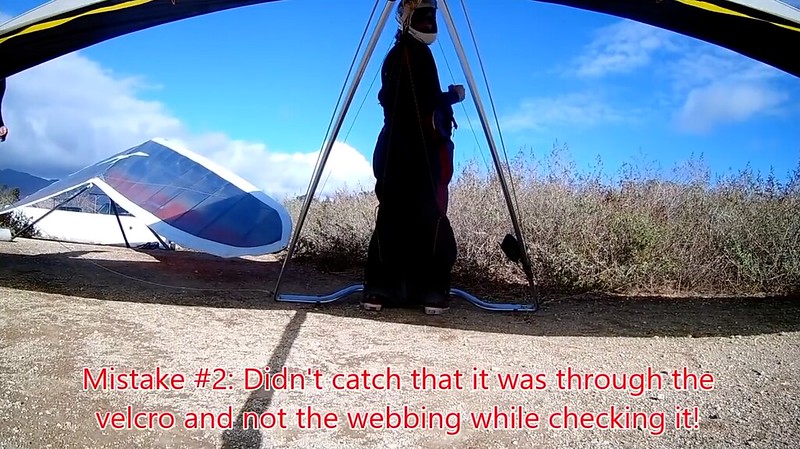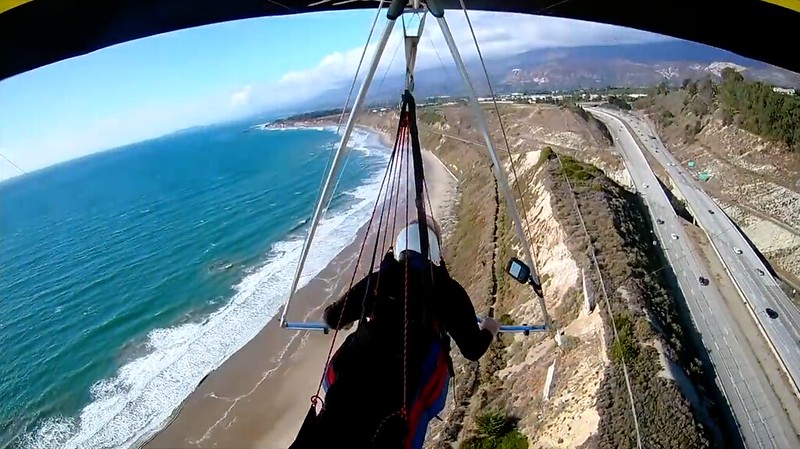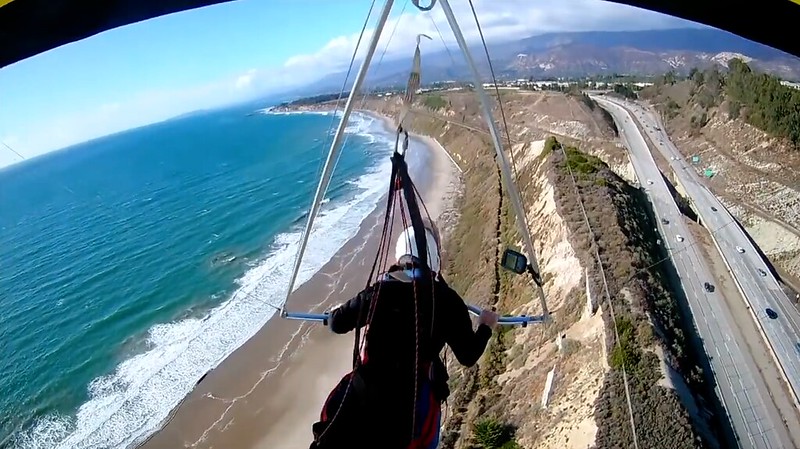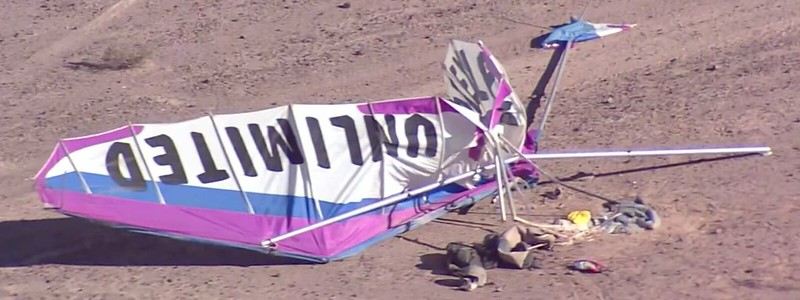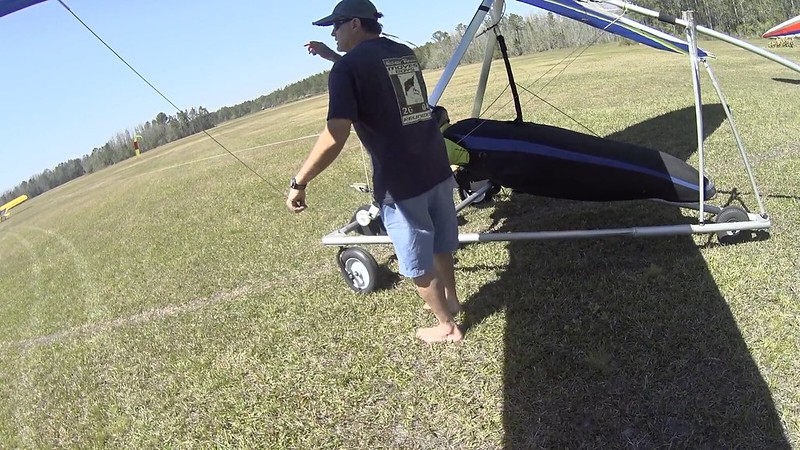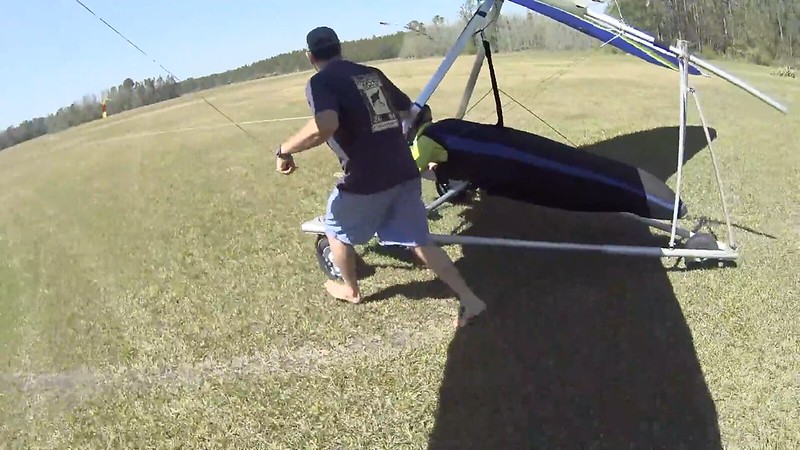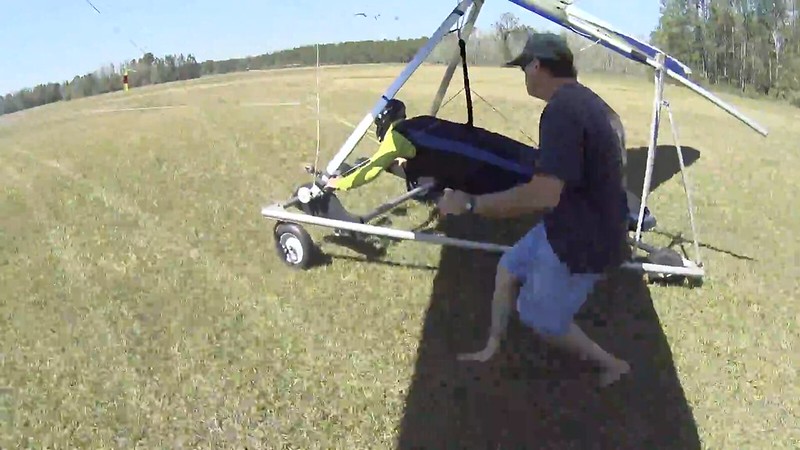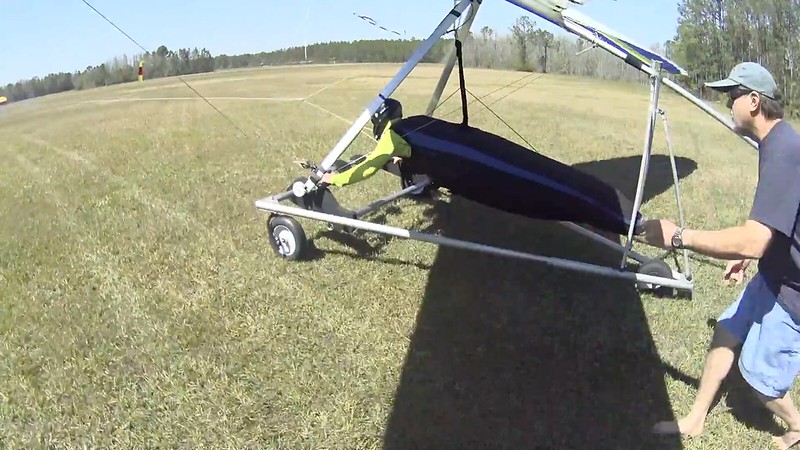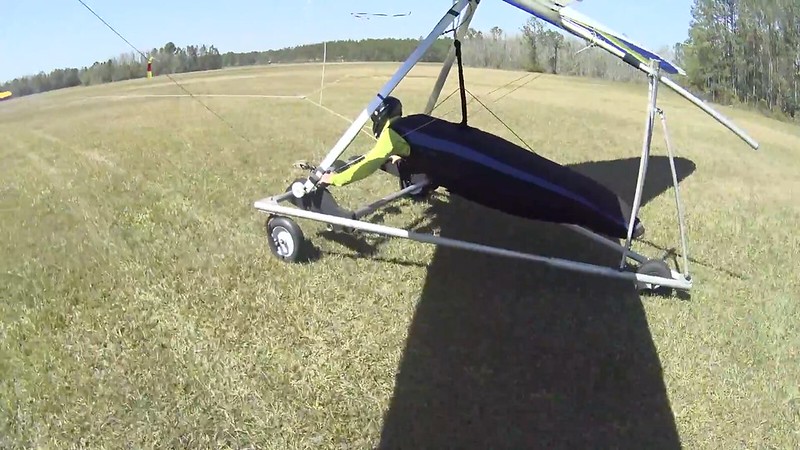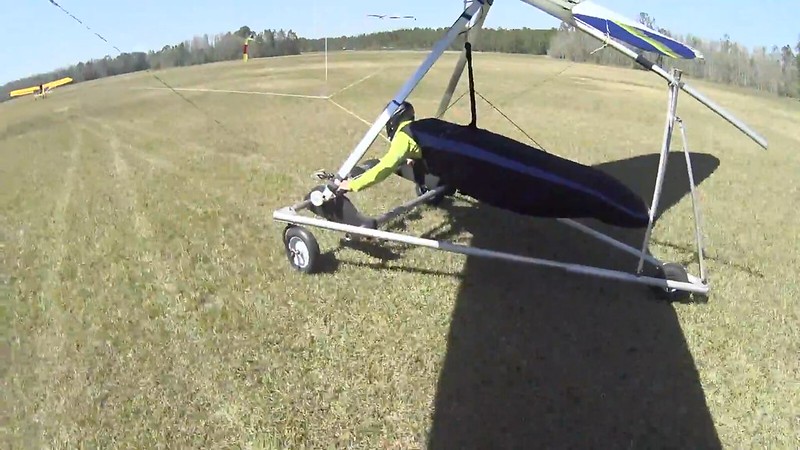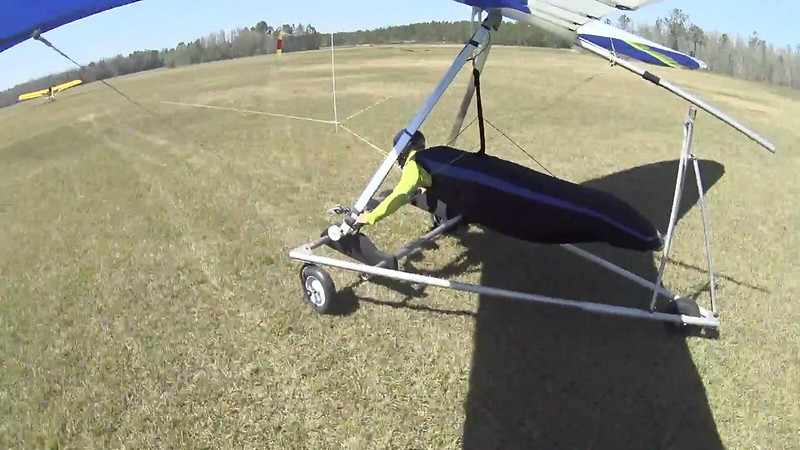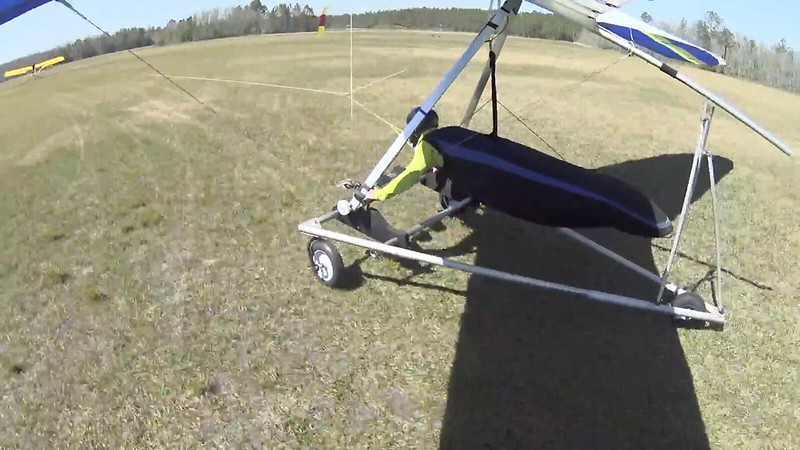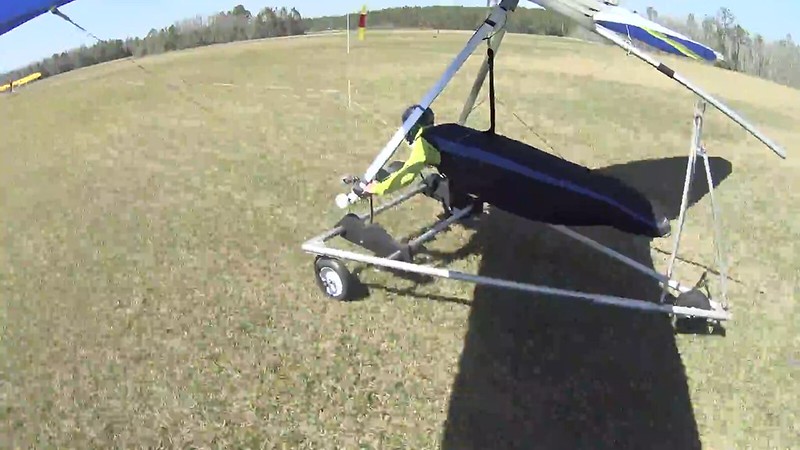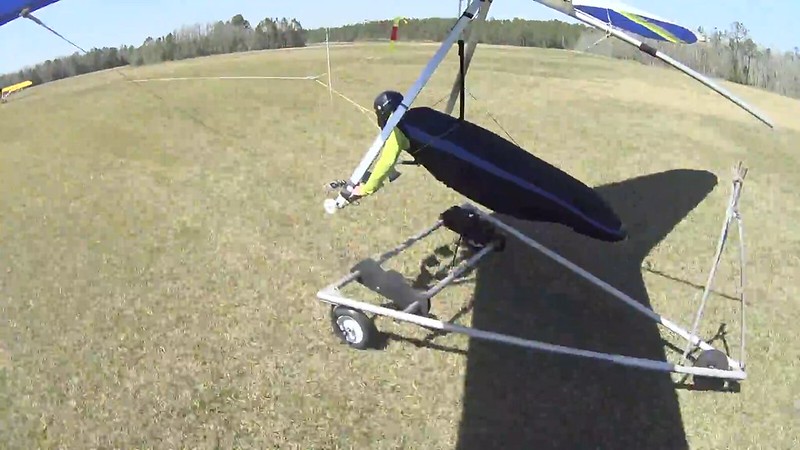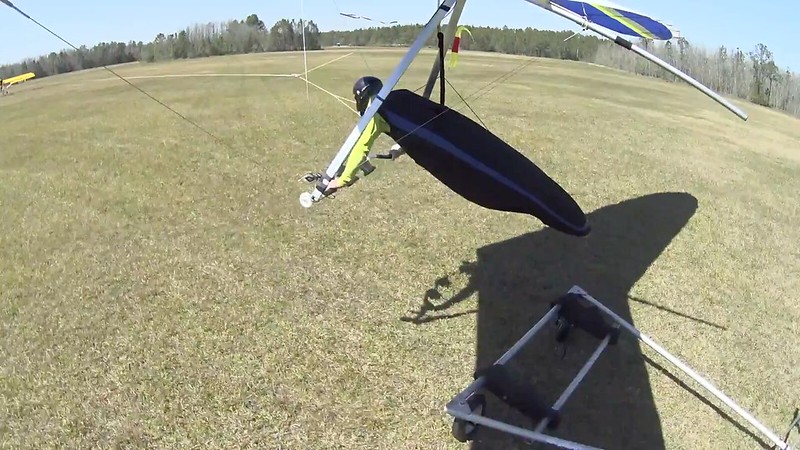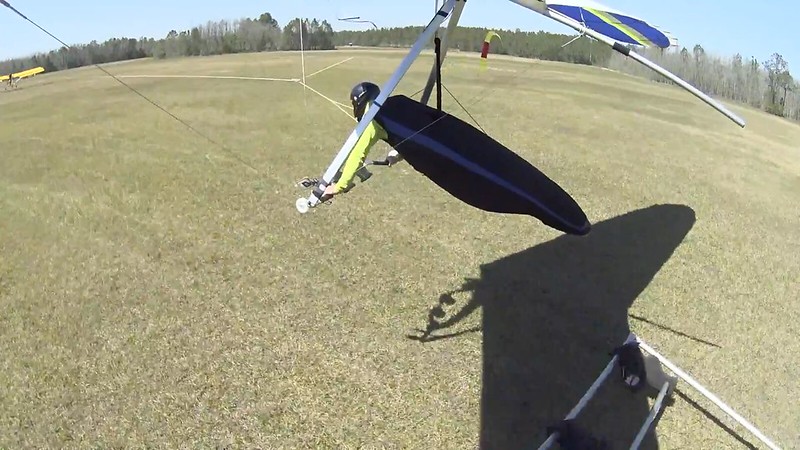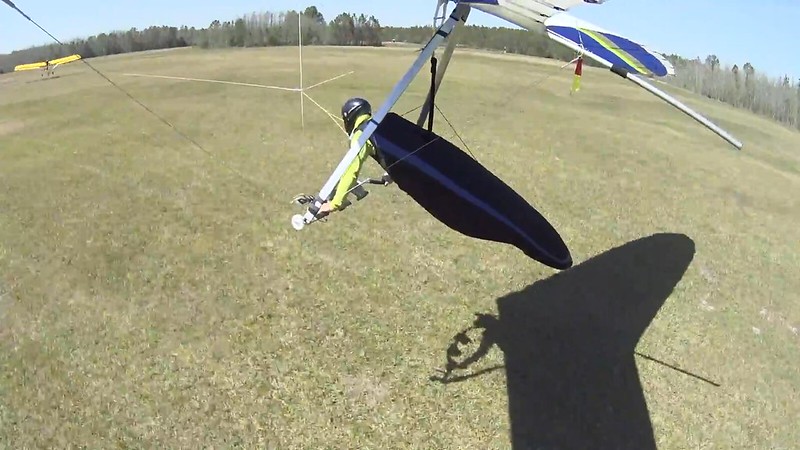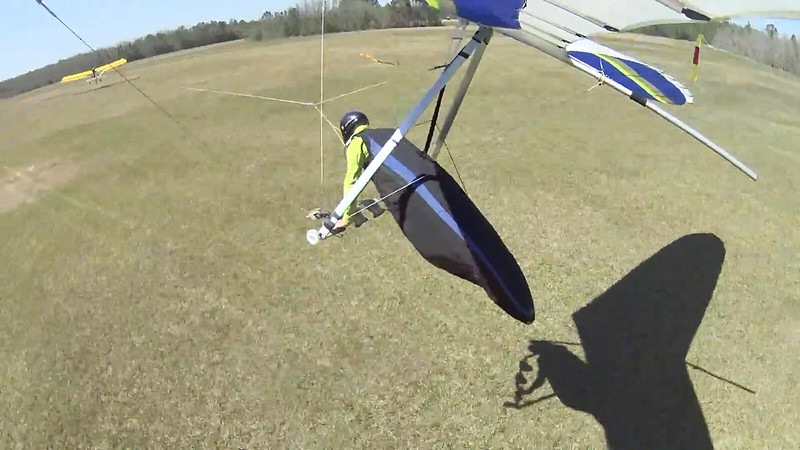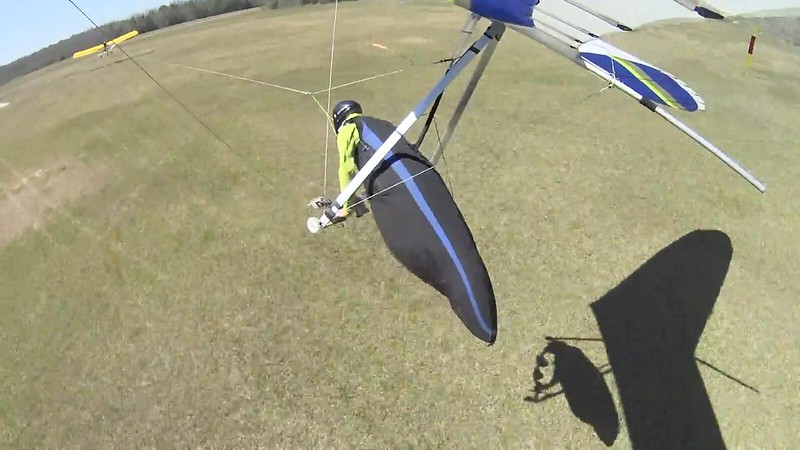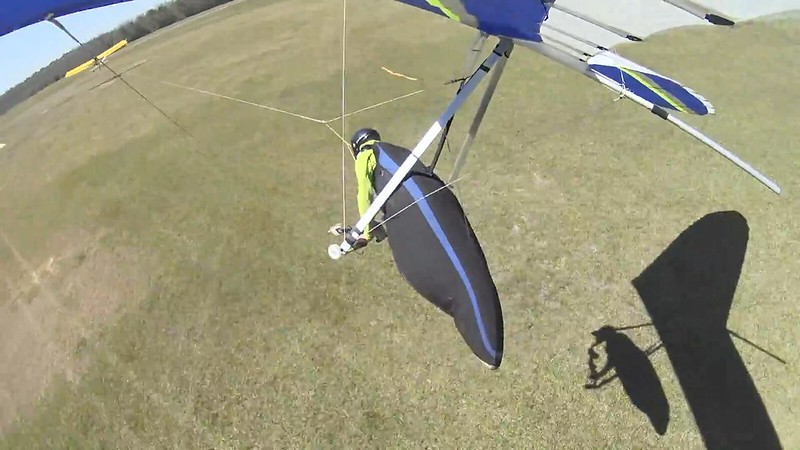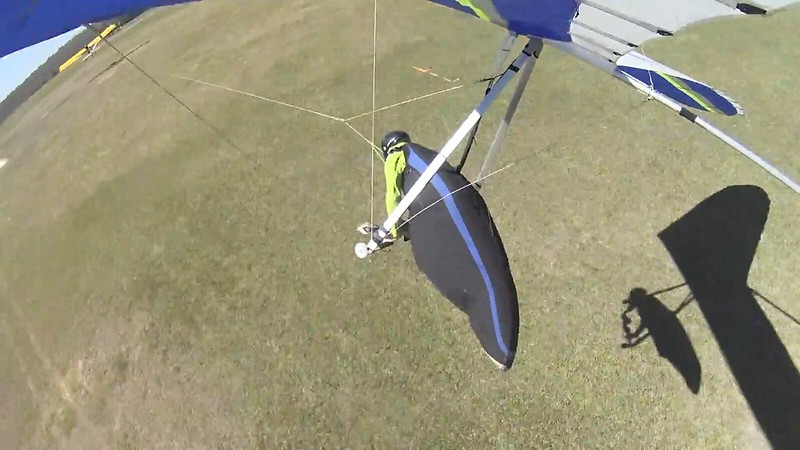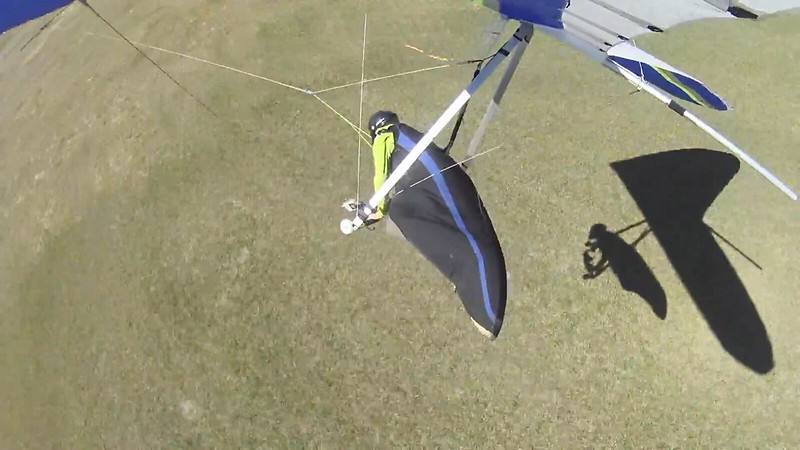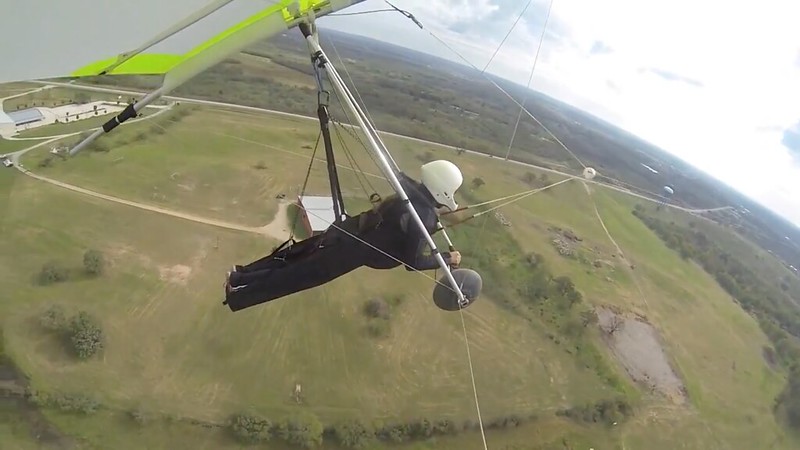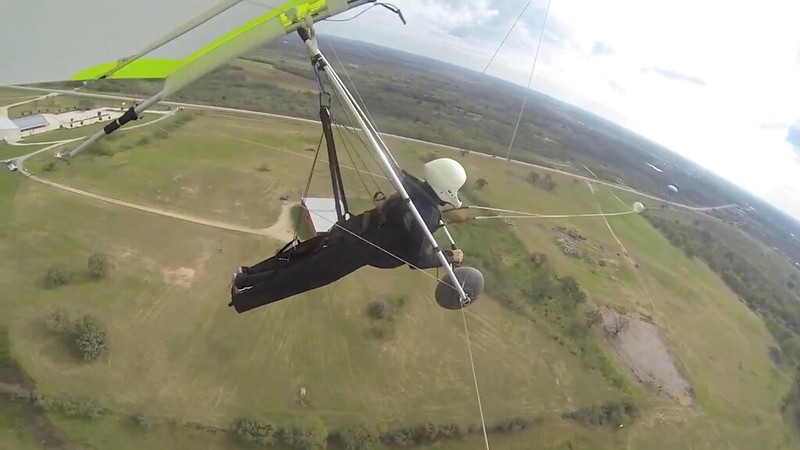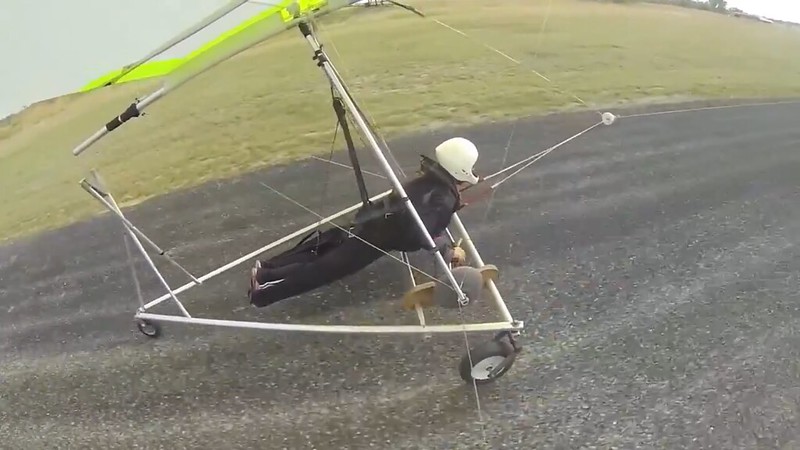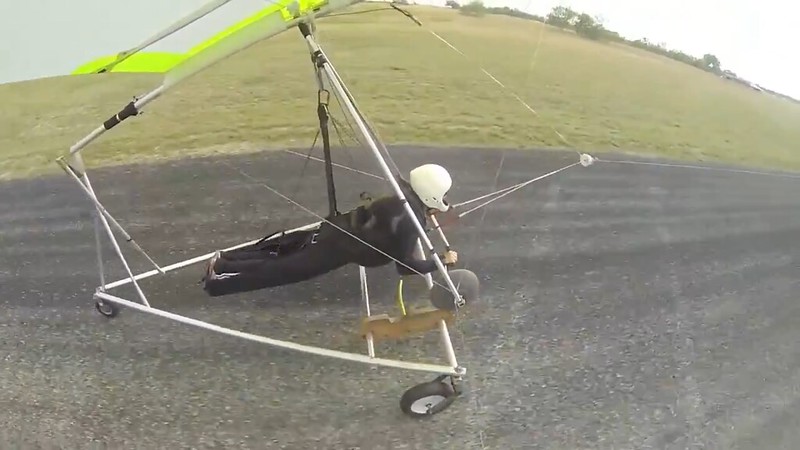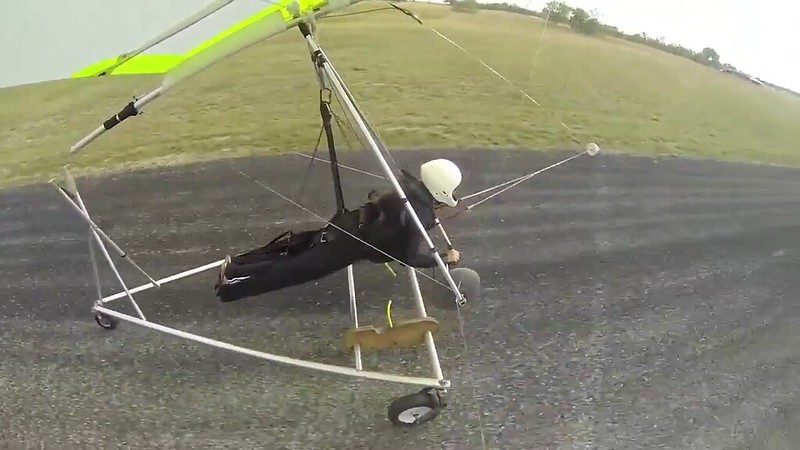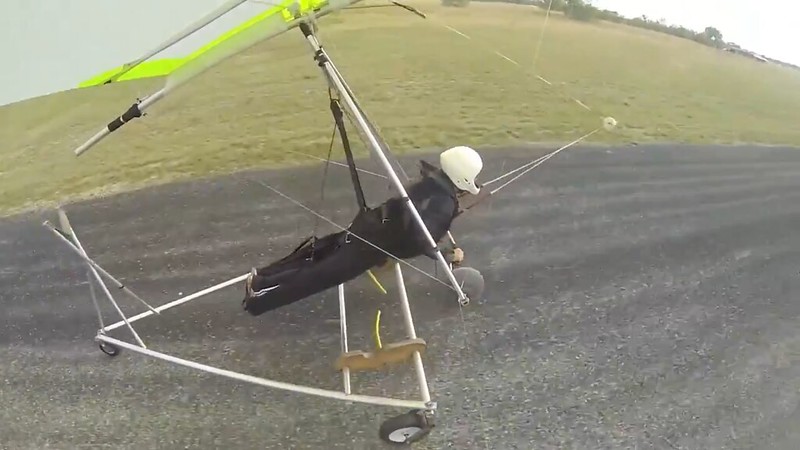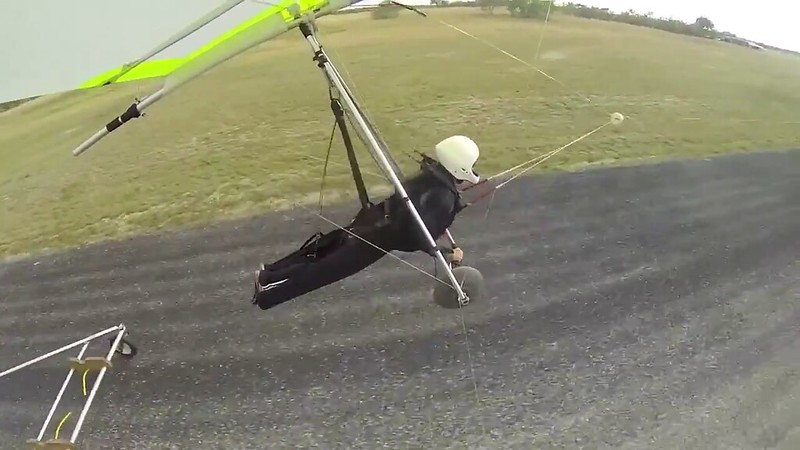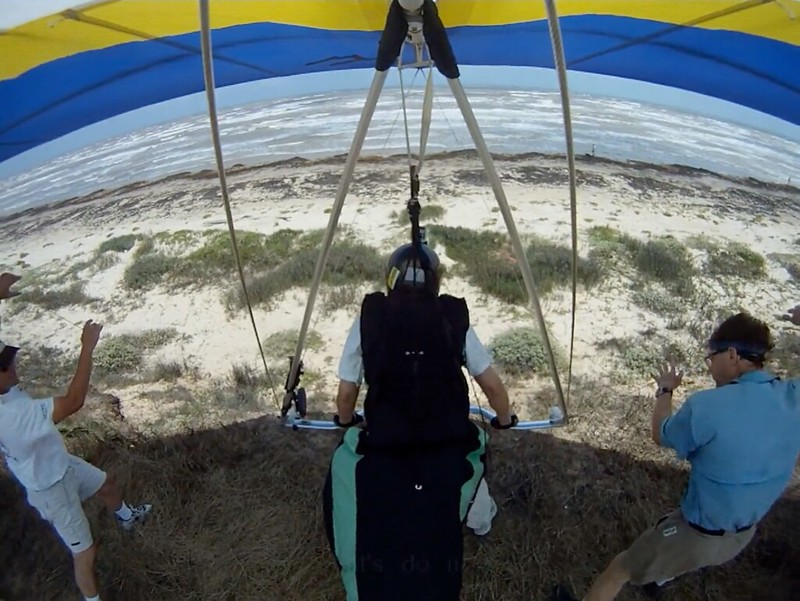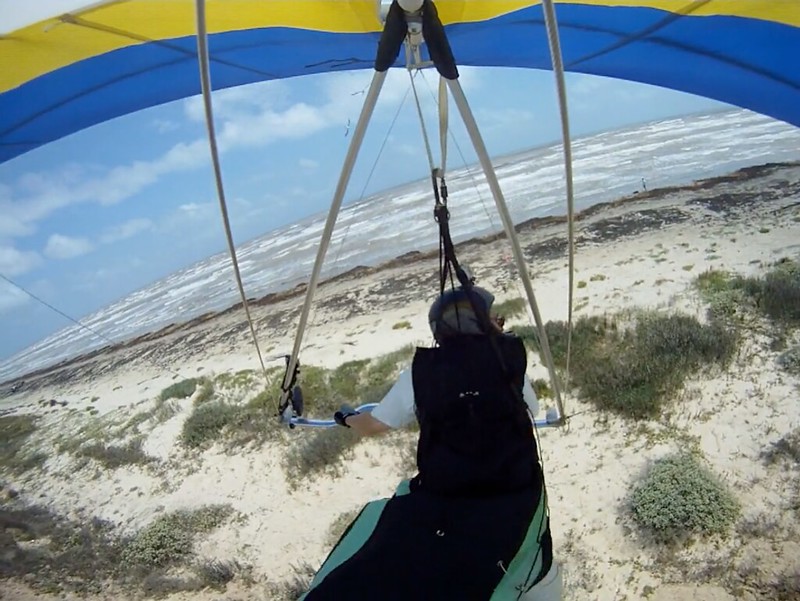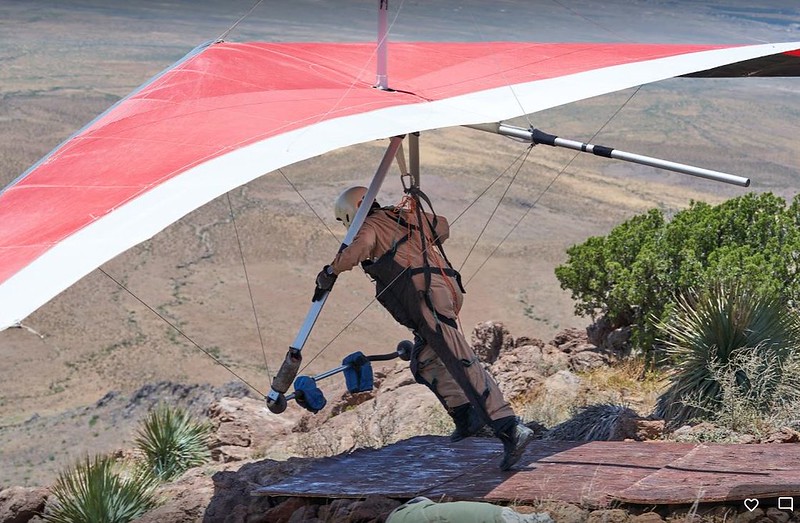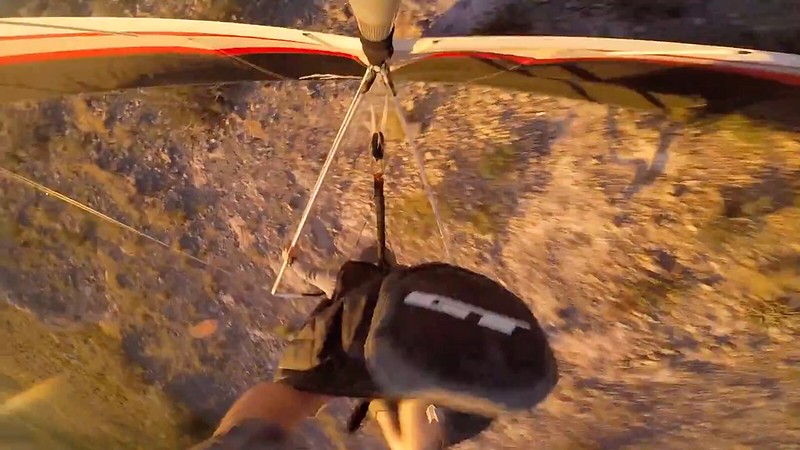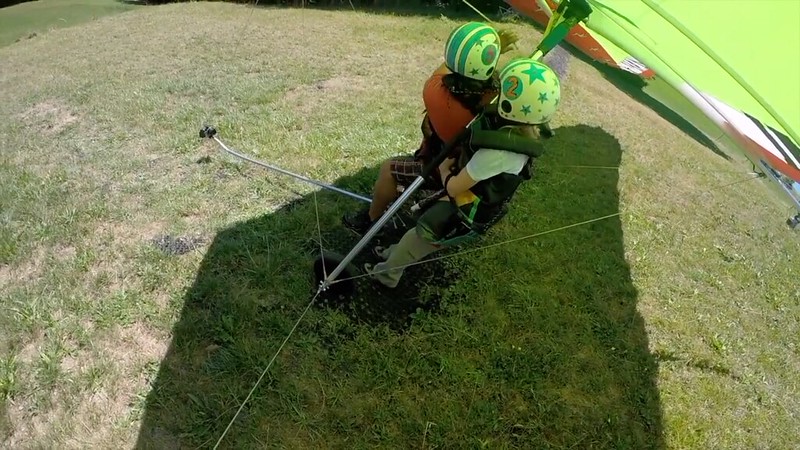http://www.ushawks.org/forum/viewtopic.php?f=2&t=1563
Platform Launching (PL) Draft suggestions needed
Bill Cummings - 2014/06/05 19:44:19 UTC
If a tow pilot hasn't had a release failure or a capture upon releasing -- you will.
There is a far, far, lesser chance of a hang strap failure.
Bob Kuczewski - 2014/06/06 17:21:51 UTC
Great can of worms!!!!
I like the comparison between a release and a hang strap. That really drives home the point.
As forum moderator, I try to read every post on the forum. I know Tad has long pushed the "strong weak link" idea, and I'm glad to see the other side of the argument being presented.
I also like that this discussion emphasizes that breaking a weak link is something that can be practiced - just like we practice stalls - so we understand how to handle them and to not be afraid of them. I had a terrifying stall experience with my instructor when I was learning to fly airplanes back in the 70s. For a long time I feared getting close to stall. As long as I feared stalls, I was not spending much time getting comfortable with them, and that didn't make me a better pilot. So there's a lot to be said for safely learning to handle the inevitable rather than trying to come up with some way to avoid the inevitable.
Nice job Bill !!!!





Bob Kuczewski - 2014/06/06 17:50:48 UTC
As another suggestion, I think the notions of balance and pilot choice should be introduced at some point. The curve of injuries as a function of weak link strength probably looks something like this:
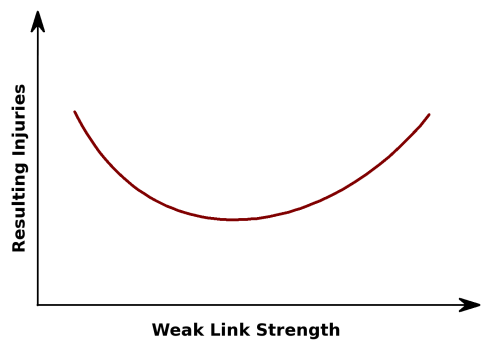
That means there's danger on either end ... and even at the lowest (best) possible point!!
However, the shape of that curve for any particular pilot is based on their choice of equipment, conditions, and their own pilot skill. A pilot with good skills at recovering from weak link breaks (as Bill mentioned above) will be operating with a curve that's much lower (less chance of injury) on the left side than a pilot with poor skills at recovering from weak link breaks. Similarly, a pilot using a good quality release will be operating with a curve that's lower on the right side than a pilot using a poor release.
In the end, I think the best weak link strength will be based on the combination of equipment, conditions, and pilot skill. So one of the goals of this chapter should be to show the full range of those issues so the individual pilot can be educated as to how to weigh them in making their own choice of weak link strength. It's important to remember that the safest weak link strength may differ between two pilots even if they have the same weight, equipment, and conditions. Their skills matter, and I think that is very well said in Bill's post.
Great topic and discussions Bill, Sam, Mike, and Charlie!!!
I like the comparison between a release and a hang strap. That really drives home the point.
Fuck yeah, Bob. Both failures are totally inevitable. Over a tow-only career spanning five hundred flights one can expect an absolute minimum of three hang strap failures and fifteen release failures. That's why we fly with backup loops, parachutes, backup releases, weak links, hook knives, helmets. Can you begin to imagine the carnage from just the hang strap failures we'd see otherwise?
The problems with those items...
- The hang strap is the only component of a hang glider that can't be safely preflight inspected. That's why we fly with backups. But those also can't be safely preflight inspected 'cause they're basically just longer versions of the same thing so we're still just rolling dice but with just half the odds of plummeting.
- The tow releases are a bit different. While they CAN be safely designed, maintained, preflighted they can still fail for no predictable reason. They're mechanical things and thus fundamentally incompatible with hang glider design. When one fails the best we can do is ban them (at least for a short while) from the Worlds at Hay and make sure have our razor-sharp hook knives sheathed in extremely easily reachable locations.
As forum moderator, I try to read every post on the forum...
...from the total douchebags I count on for political support which I think might be valuable in undermining acceptance of fundamental aeronautical competence. 'Cause the few individuals in the sport who have it are precisely the same ones who'll be able to see the self serving scam I'm trying to run here.
You TRY to read every post on the forum? So what do you do with the other 23 hours and 58 minutes of your daily schedule?
I know Tad has long pushed the "strong weak link" idea...
Which is what? Please define a "strong weak link" using actual numbers.
Or use what total lunatics like Donnell and Bill use to define a strong weak link:
Donnell Hewett - 1981/10-07
A properly designed weak link must be strong enough to permit a good rate of climb without breaking, and it must be weak enough to break before the glider gets out of control, stalls, or collapses. Since our glider flies level with a 50 pound pull, climbs at about 500 fpm with a 130 pound pull, and retains sufficient control to prevent stalling if a weak link breaks at 200 pounds pull, we selected that value.
http://ozreport.com/forum/viewtopic.php?t=30971
Zach Marzec
Bill Cummings - 2013/02/28 06:11:37 UTC
When the pilot lost the towline it had the nose too high and due to that it climbed into a stall. My weaklinks would not allow me to climb that fast and develop into a stall like that.
So obviously Bryan here - on the final flight of his hang gliding career (which maxed at Two with a Surface Tow signoff) is using a strong weak link.
11-0513
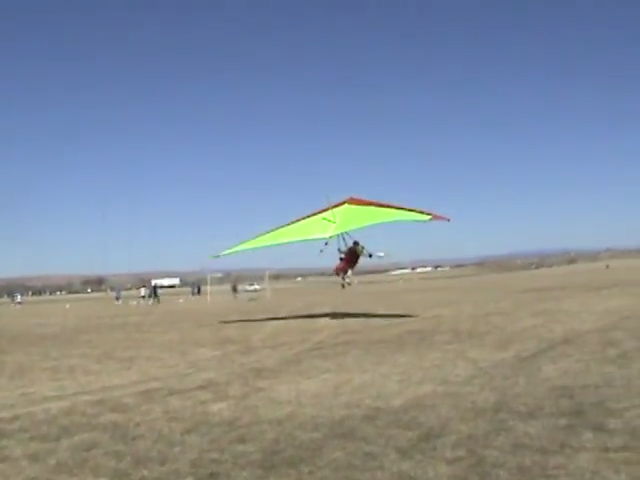
12-0514

It's allowed him to climb into a dangerous stall. He's actually not even close to being stalled yet. He's gonna continue to climb to:
19-0707
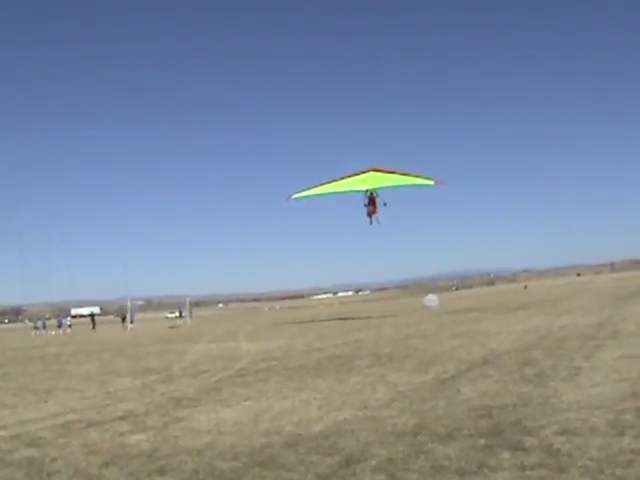
and ONLY THEN do things start getting a bit mushy. What WERE they THINKING when they allowed him to hook up with a Tad-O-Link like that? Ends here:
29-0921
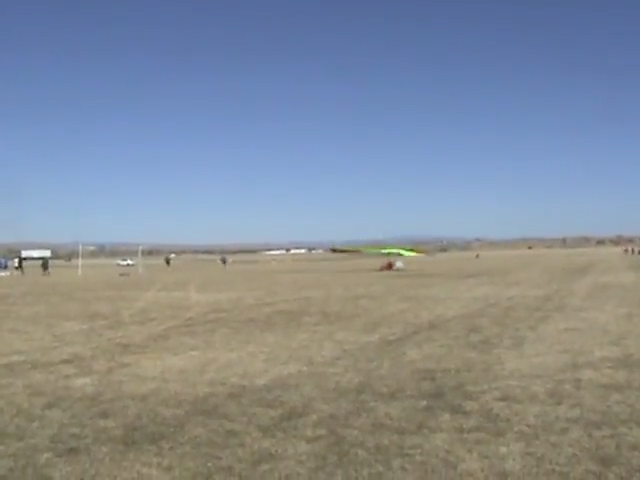
with a right humerus broken in three places. If we use your graph and make his weak link 33 percent more safe he only breaks his humerus in two places but I'm still not sure that would be an acceptable result.
I guess about all for which we have to be thankful is that this wasn't an AT. Can you even begin to imagine what would've happened to a tug pilot getting his tail pulled up to the extent it would've been on that flight? Talk to Russell Brown. Ask him what it was like getting his tail pulled around with the Tad-O-Link I forced Paul Tjaden to use at Zapata on 2008/07/20. Or maybe not. PTSD issues to consider here.
...and I'm glad to see the other side of the argument being presented.
Me too, Bob. It's only in an association that really does honor the free speech of its members (and goes stone deaf to the unpopular free speech of its unpopular nonmembers) where it's possible to hear the slightest whisper of defense of the light weak link argument. Too little too late though, I fear. Do you realize that at Zapata and Big Spring people are being allowed to go up to four hundred pounds by doubling Greenspot and using two hundred pound test loops? Can you begin to imagine how many pieces Bryan's right humerus would've been broken into with "SAFETY" devices such as those?
I also like that this discussion emphasizes that breaking a weak link is something that can be practiced - just like we practice stalls - so we understand how to handle them and to not be afraid of them.
Fear not, Bob...
http://ozreport.com/forum/viewtopic.php?t=24846
Is this a joke ?
Davis Straub - 2011/08/26 14:04:52 UTC
We had six weaklink breaks in a row at Zapata this year. Russell Brown (tug pilot, tug owner, Quest Air owner) said go ahead and double up (four strands of Cortland Greenspot). He knows I used his Zapata weaklink in Big Spring (pilots were asked to tell the tug pilot if they were doing that).
And only the last of those guys - Pete Lehmann - got his knee sanded down to the bone and had to go to the emergency room. And just think what would've happened if they'd been using the Tad-O-Links (that Russell Brown (tug pilot, tug owner, Quest Air owner) told everybody to use immediately afterwards). Pete would've probably gone into a severe lockout instead and we can predict the severity of the resulting injuries from the right end of your graph. One shudders to think about it.
But how 'bout the practice they DIDN'T get towing up to two grand behind the Dragonflies; hunting and climbing in thermals; circling up with fellow competitors; running XC courses; evaluating, approaching, landing in XC fields; racing to goal... All the shit they came and paid big bucks to do? (Fuckin' asshole.)
Wanna see the u$hPa SOP protocol for practicing for weak link increases in the safety of the towing operation?
The United States Hang Gliding and Paragliding Association, Inc. - 2016/10/22
Standard Operating Procedure
12. Rating System
02. Pilot Proficiency System
11. Hang Gliding Special Skill Endorsements
-A. Special Skills attainable by Novice
05. Aerotow
-f. The candidate must also demonstrate the ability to properly react to a weak link/tow rope break simulation with a tandem rated pilot, initiated by the tandem pilot at altitude, but at a lower than normal release altitude. Such demonstrations should be made in smooth air.
If they're safe and we can learn how to handle them effectively how come we've gotta be up at two thousand feet in smooth air with a tandem rated pilot pulling the pin when he thinks it's safe enough? How come we don't practice them with a tandem rated pilot pulling the pin twenty feet off the deck under full 914 power in choppy thermal conditions which is where this shit actually happens and the in the conditions in which it's most likely to happen? How come when we get signed off for Flat Slope Launch we can't do it on the upper flat zone of the Henson ramp with the air coming straight in smooth at fifteen?
Wanna see what it says for stalls?
08. Intermediate Hang Gliding Rating (H3)
-B. Intermediate Rating - Required Witnessed Tasks
02. Demonstrated Skills and Knowledge
l. Has practiced and demonstrates gentle stalls and proper recovery under the direct supervision of an instructor or qualified observer, at least 500' from any object.
GENTLE stalls practiced AND demonstrated UNDER THE DIRECT SUPERVISION OF an instructor or qualified observer AT LEAST five hundred feet from ANY object. (The runway comes to immediate mind for the "object" department.)
Similar parameters 'cause a weak link success is pretty much synonymous with a stall. 'Cept u$hPa's WAY more conservative on the weak link simulation than it is on the deliberate solo induced gentle stall.
A little personal history here...
Mark Airey was the total douchebag head of Kitty Hawk Kites instruction when I did the '82 season down there. In fairly short order I became a way better dune pilot than he'd ever dream of being.
He'd seen me stall and recover a zillion times in afternoon thermal chop and I asked him for the check-off towards my Three. Nope, you've gotta be over five hundred feet. What!! I can recover just fine in this life threatening shit down here where we're keeping score but I might not be able to pull the bar in and wait for the glider to start flying at half a K? (Suck my dick, Mark.)
So near the end of the season I need stalls in turns - again at altitude - for my Four. We're doing a Yarnall winch. I ask him to observe me. I come back down... Oh, sorry, I forgot. You have it on video. Nah, can't see it well enough.
Total shit sport controlled by total shit people since the dawn of time.
And for the Four you've gotta do stalls straight ahead and in turns - which are WAY safer for a (tailless) hang glider - but the minimum clearance is still five hundred. So it's not sounding to me like this is really anything one can get better at. How 'bout you, Bob?
I had a terrifying stall experience with my instructor when I was learning to fly airplanes back in the 70s.
- Care to go into more detail? Nah, probably not worth our attention.
- You said you had a terrifying stall experience WITH your instructor. Implying that he was also terrified. Why? Did he not understand how harmless stalls were?
For a long time I feared getting close to stall.
Why? Your instructor wasn't able to get you to understand what a total nonevent the stall was? As long as you were wearing a Helmet anyway? Not even coming CLOSE to a stall?
As long as I feared stalls, I was not spending much time getting comfortable with them, and that didn't make me a better pilot.
And you OBVIOUSLY *DIDN'T* spend ANY time getting comfortable with them - 'cause this is like getting comfortable flying kinked sidewires or going up behind a 914 with Rooney on the front end and a Rooney Link on the back end. You're rolling dice with your life. And you DIDN'T become a better pilot. I've never heard about a single noteworthy accomplishment you've ever scored on anything.
So there's a lot to be said for safely learning to handle the inevitable rather than trying to come up with some way to avoid the inevitable.
And we all read that and think you've played around with deliberately induced stalls in Cessnas, sailplanes, hang gliders and thus have become a really solid pilot.
I did deliberate level stalls for my Three and Four but that was it - as far as I can recall. I got stalled by Rooney Link successes on AT but I virtually always flew a two point bridle so they tended not to be big deals. When doing tight turns in light dune soaring conditions I'd deliberately stall a tip to get turned back the other way and stay back in or a bit behind the lift band. And I almost got killed at the Jockey's Ridge South Bowl when I got turned around and spat out the backside of a nuclear thermal and when I was flying too slowly close to the ridge at Woodstock and got my left wing fully stalled and crashed back into the trees and rocks.
But NOBODY *PRACTICES* stalls to get better at stuffing the bar and waiting for the wing to start flying again. The only thing we might ever get any better at is not getting ourselves into stall situations. And if you wanna contradict that then show me some videos to prove otherwise.
And ever since Davis became happy with the Tad-O-Link and decided to permit us muppets to fly them...
02-00820c
http://c2.staticflickr.com/8/7252/27169646315_9af9a62298_o.png
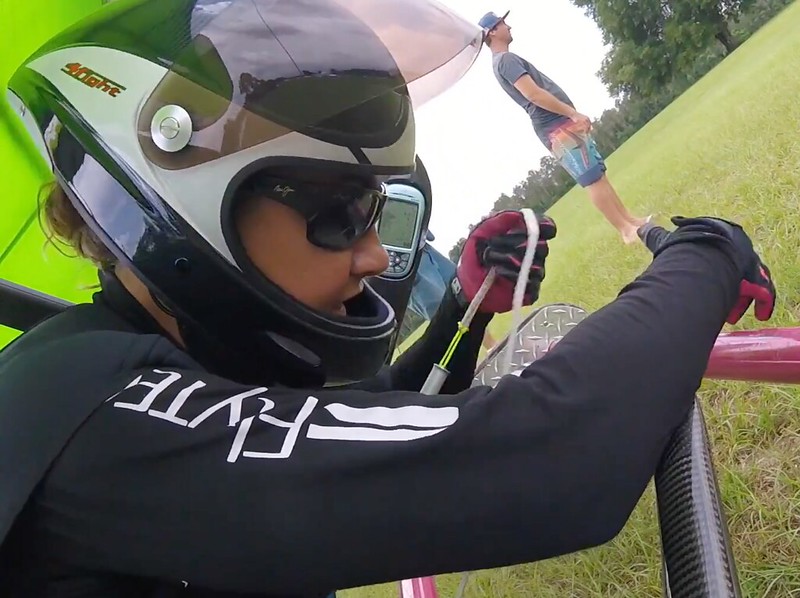
...we're not seeing or hearing about increases in the safety of the towing operations at AT comps.
Saying that stalls and weak link successes are inevitable in hang gliding is the same as saying we're just rolling dice with our lives. If we were OK doing that we'd have totally abandoned hang gliding and gone with paragliders for thermal soaring machines.
Yeah, that's where the future of this sport really lies. Keep up the great work.
As another suggestion, I think the notions of balance and pilot choice should be introduced at some point. The curve of injuries as a function of weak link strength probably looks something like this:

It's a good thing there's no spike in the middle of that curve. That would've made it considerably less pleasant to pull outta your ass.
And while we're on the subject of honoring free speech... Ya know whose free speech I valued virtually beyond measure? Whenever Jim Keen-Intellect Rooney opened his yap in any venue at any time of the year it was total CHRISTMAS. The Industry was thrilled with him for about a decade based on the way he degraded all the problematic discussions and was able to get Yours Truly temporarily silenced. But after Kite Strings...
http://ozreport.com/forum/viewtopic.php?t=30971
Zach Marzec
Jim Rooney - 2013/03/07 18:24:58 UTC
Go back to Tad's hole in the ground.
While you're there, ask him why he was banned from every east coast flying site.
...opened they realized what a total gift he was to the enemy and pulled their support and let him continue to hang himself.
However, the shape of that curve for any particular pilot is based on their choice of equipment, conditions, and their own pilot skill. A pilot with good skills at recovering from weak link breaks (as Bill mentioned above) will be operating with a curve that's much lower (less chance of injury) on the left side than a pilot with poor skills at recovering from weak link breaks. Similarly, a pilot using a good quality release will be operating with a curve that's lower on the right side than a pilot using a poor release.
But where's the challenge in using a good quality release? It's like flying in glassy smooth ridge lift. We never advance as pilots. We advance by launching, flying, landing in midafternoon choppy thermal conditions. This is why we see all the best AT pilots flying the shoddy bent pin crap that Davis sells. If they can survive that they can survive anything. (Remember the way Zack Marzec and Jeff Bohl got eliminated from the gene pool at Quest a few years back?)
In the end, I think the best weak link strength will be based on the combination of equipment, conditions, and pilot skill.
- So what happened to OPINION?
http://ozreport.com/forum/viewtopic.php?t=24846
Is this a joke ?
Jim Rooney - 2011/08/31 09:25:57 UTC
But you see... I'm the guy you've got to convince.
(or whoever your tug pilot may be... but we all tend to have a similar opinion about this)
Since the introduction of Skyting towing in 1981...
Donnell Hewett - 1981/10
WEAK LINK
Every tension limiting device discussed up to now consists of mechanical components, has a limited range, or relies upon human operation. Every one of these tension limiting devices is subject to failure. Please correct me if I am wrong, but it is also my understanding that there are a large number of tow pilots today who are depending upon smooth air, rope stretch, boat speed, mechanical devices, and ground crews to provide the tension limitation control for their flights. Well, in the author's opinion that is just not good enough.
...hang glider weak link strength has been solely a function of opinion. And just because the opinion factor rather abruptly doubled in the immediate aftermath of Zack Marzec is no reason to just totally abandoned a proven system which has never once failed to work.
No wait. You DO say "I think..." so really that's just your opinion and I think we're still OK here.
- Me too. I have no freakin' clue why sailplane pilots just fly the weak link specified by their glider's manufacturer or u$hPa doesn't have weak link flying clinics and ratings for graduated levels of weak link success response skills. Maybe you could get Bill to write up some more of his lunatic drivel for a Bob Show Pilot Proficiency Program.
- Oh thank you so very much, highly exalted Emperor Bob of The Bob Show whose main claim to fame is that he has very little experience towing, for telling us what you personally "THINK" about weak links. But why not the Royal "We" the way...
Donnell Hewett - 1980/12
Since our glider flies level with a 50 pound pull, climbs at about 500 fpm with a 130 pound pull, and retains sufficient control to prevent stalling if a weak link breaks at 200 pounds pull, we selected that value.
...His Holiness Donnell of Kingsville did. He introduces his lie with a lie. He gives the impression that this wisdom was derived through a team effort. So if it were then how come he never once in the four decade remainder of his earthly existence gives a molecule's worth of recognition to a single other party? And Tost sailplane weak links don't pass muster 'cause he personally hasn't flight tested them. And ditto for the Brooks Bridle.
Bob Fisher - 1982/05/19
Donnell,
I believe this is everything you were trying to achieve, the practical implementation of your theory.
Donnell Hewett - 1983/01-11
You are not the only one who has expressed an interest in air-to-air towing (tuging), but as of this date, no one has reported to me their experiences on this subject. Skyting No. 3 discusses my opinions on this topic, primarily from the theoretical point of view. In essence, I believe that there is no reason that "tuging" cannot be accomplished safely by using a skyting system. In fact, I would never attempt ultralight towing with anything except the skyting bridle. (Or possibly the Brooks Bridle. See Skyting No. 2.)
Wasn't worth his personal divine effort to check out and condemn or sanctify. And note that Bob Fisher was saying that:
- Donnell didn't achieve what he was trying to
- Donnell's
-- Skyting Bridle crap wasn't a practical implementation
-- "theory" was full o' shit
And compare/contrast just how well Donnell and his "contributions" have held up in comparison to John Dickenson - who actually did something to get us more safely/competently/effectively airborne.
So one of the goals of this chapter should be to show the full range of those issues so the individual pilot can be educated as to how to weigh them in making their own choice of weak link strength.
That chapter ended 2014/08/25 19:58:59 UTC. Better part of six years since that we've been left having to throw darts to find out what weak link we should be using.
It's important to remember that the safest weak link strength may differ between two pilots even if they have the same weight, equipment, and conditions.
Or it MAY NOT. Who can really say for sure? 'Specially those who've had very little experience in towing and get their kicks seeing just how many idiots they can get to devour their shit year after year after year.
Their skills matter, and I think that is very well said in Bill's post.
Me too. If only we could get Davis to come around.
Great topic and discussions Bill, Sam, Mike, and Charlie!!!
Too bad Terry...
http://farm9.staticflickr.com/8143/7462005802_bbc0ac66ac_o.jpg
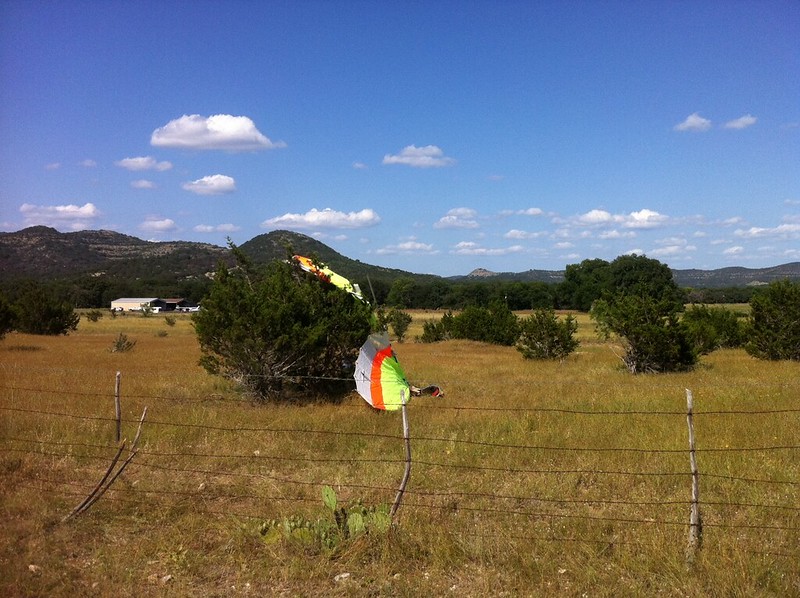
...didn't survive the Bob and Sam Shows long enough to understand how totally irrational is the fear of stalls and how bulletproof one is when he comes off of tow at low tension. Also looks to me like his stall recovery skills left a bit to be desired. Should've been flying a safer weak link to compensate.
Here's the list of US hang gliding fatalities from the u$hPa hang gliding's bloodiest year in recent memory:
2015/03/27 - Kelly Harrison / Arys Moorhead
2015/05/09 - Markus Schaedler
2015/05/17 - Scott Trueblood
2015/06/20 - Bertrand Delacroix
2015/06/26 - Trey Higgins
2015/08/23 - Rafi Lavin
2015/10/11 - Jesse Fulkersin
2015/11/08 - Karen Carra
We're not doing 2015/08/24 - Craig Pirazzi 'cause that was a ground handling incident which had absolutely nothing to do with launching or flying a glider. Might as well eliminate Rafi as well 'cause what he was attempting to fly wasn't anything a sane person would consider a hang glider - he just assumed it was and couldn't be bothered to make sure.
All others were consequences of stalls or insufficient airspeed, power to handle the situation, execute the flight plan.
If Jean Lake had been afforded the tension they expected and needed to climb out all the other bullshit could've been dealt with.
http://www.hanggliding.org/viewtopic.php?t=36768
Newbie Training ?
Doug Marley - 2020/05/17 02:29:36 UTC
The big problem with any type of towing flight instruction, whether that is truck towing, scooter towing, or aerotowing, it's exactly as flyrigid explained; it's NOT adequate for teaching anyone how to put in the most energy into the glider-pilot system on a hill- or mountain-launch. I've heard that Steve does have access to a small training hill, but I've never seen it. I have also been informed by some of Steve's students that he does teach hill launching skills. Hmmm. And I've seen some of those pilots launch off mountain sites. Let's just say that if conditions went pear-shaped within a hot second, there would not be enough energy in most of those launches to save the launch in my humble opinion.
Sure, in easy, smooth conditions a pilot can pull-off a too-high pitch launch and be wafted into the air before he takes three dainty steps. In wiley (fun) soaring conditions, it's far safer for your body to develop maximum energy (excess airspeed) in your run before you ALLOW the glider to lift you off the slope.
Got that, Bob? What keeps aircraft SAFE through critical operations is POWER.
Wills Wing / Blue Sky / Steve Wendt / Ryan Voight Productions - 2007/03
NEVER CUT THE POWER...
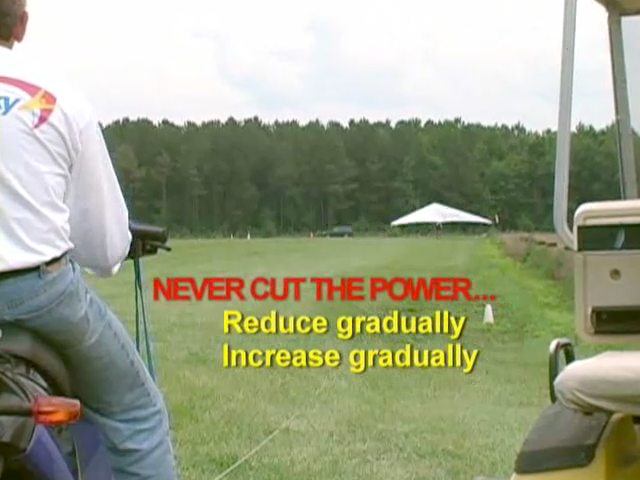
Reduce Gradually
Increase Gradually
While what keeps aircraft safe in Hewett opinion based aviation is the limiting and instantaneous arbitrary elimination of power.
http://ozreport.com/12.081
Weaklinks - the HGFA rules
Davis Straub - 2008/04/22 14:47:00 UTC
For many years a number of us (US pilots) have felt that #8 bricklayers nylon line was not an appropriate material to use for weaklinks as it is not as consistent in its breaking strength (as far as we are concerned) as the Greenspot line used in the US. At the 2008 Forbes Flatlands Greenspot for the first time was used as the standard weaklink material (thanks in large part to the efforts of Bobby Bailey). We applaud these efforts to improve the safety of aerotowing by using a better weaklink material.
And for many years a number of us (US pilots) posted safety officers at the heads of all the launch lines to make sure that anybody who didn't feel the same way as a number of us (US pilots) would stay grounded...
Pilots must use weaklinks provided by the meet organizers and in a manner approved by the meet organizers. All weaklinks will be checked and use of inappropriate weaklinks will require the pilot to go to the end of the launch line to change the weaklink.
...until he too felt that a single loop of Cortland 130 lb Greenspot braided Dacron Tolling line placed at one end of a shoulder bridle was extremely consistent in its breaking strength and applauded Bobby Bailey's efforts to improve the safety of aerotowing by using a better weaklink material.
Later in 2011 at Zapata many of us (US pilots) decided that a double loop of Cortland 130 lb Greenspot braided Dacron Tolling line placed at one end of a shoulder bridle would be twice as consistent in its breaking strength as a single loop and applauded Russell Brown's efforts to improve the safety of aerotowing.
And currently...
http://airtribune.com/2019-big-spring-nationals/info/details__info
http://airtribune-production.s3.amazonaws.com/media/contest/files/2019/07/GTxd6mT4AIn8.pdf
2019 Big Spring Nationals - 2019/07
Weaklinks of 140 and 200 (280 and 400 towline) pounds will be available and provided by the organizers. Weaklinks provided by the organizers must be used by the competitors.
...there's no mention of Cortland 130 lb Greenspot braided Dacron Tolling line, Bobby Bailey, Russell Brown and one is permitted to choose one of two weak links of unspecified material and no track record length.
And if we believe what we were last told (by Jim Keen-Intellect Rooney (and nobody else)) about the front end weak link and go with the 200 that's a blatant violation of FAA towing regulations and we're getting the rope.
And you have all this free time to monitor paragliding instruction at Torrey, raise an Everest level stink about kiting a bagwing minus a Helmet but couldn't give the least flying fuck over issues that can and do frequently crash and kill people engaging in hang gliding.
This thread consists of 28 posts - six of which...
2014/06/06 17:21:51 UTC
2014/06/06 17:50:48 UTC
2014/06/08 04:14:46 UTC
2014/06/20 09:02:14 UTC
2014/07/04 18:13:09 UTC
2014/08/11 02:36:17 UTC
...are Bob's. And NOT ONE WORD about using a weak link as...
Tost Flugzeuggerätebau
Weak links protect your aircraft against overloading.
...a weak link - the way he did for every conventional glider launch he ever made. Not even a word about scaling a weak link with flying weight - that all other things being equal Joe Schmucker should probably be flying a heavier weak link than Karen Carra. Once you put a crack in that can of worms all the carefully crafted crap starts disintegrating fast.
